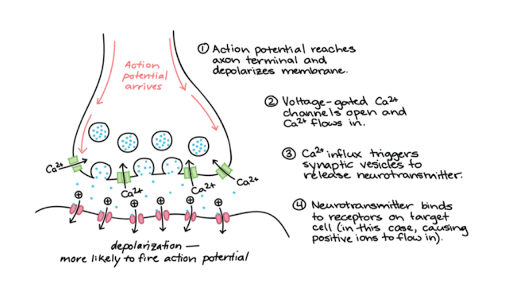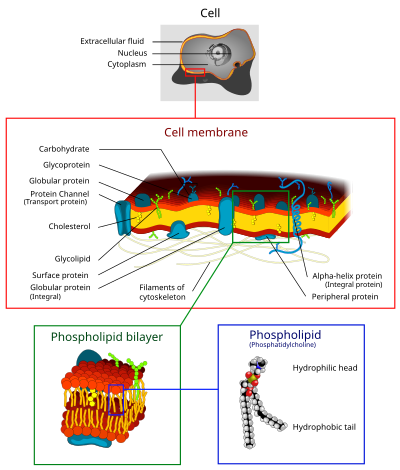CHAPTER 4
WATER REGULATION OF A FETUS AND AN INFANT
From the very moment of conception, when the father's sperm fuses with the mother's egg to form a single-cell unit of life, that cell has to divide, and divide, and divide millions of times over to develop into a form that can firmly connect itself to the uterine wall. By the time it grows to be a full-term baby, about a trillion cell divisions will have taken place. For this to happen, it has to impose a water-
WATER REGULATION OF A FETUS AND AN INFANT
From the very moment of conception, when the father's sperm fuses with the mother's egg to form a single-cell unit of life, that cell has to divide, and divide, and divide millions of times over to develop into a form that can firmly connect itself to the uterine wall. By the time it grows to be a full-term baby, about a trillion cell divisions will have taken place. For this to happen, it has to impose a water-
regulatory pattern for its needs on the mother's water-intake systems. Remember, each new cell that forms has to be filled up mainly with water. All of a sudden, the mother has to take in more water to supply the growing demands of the child. Even when the child is born, the mother has to provide the water needs of the infant through her milk-manufacturing system. The mother's breast is both a sort of water fountain for her child and a source of food.

Figure 4.1: A graphic model of the proposed body-water regulation at the three major phases of life: the fetus, the
growing child, and the fully developed person,
using water versus dehydrating fluids.
Early-Pregnancy Morning Sickness
In light of the above information, how does a pregnant woman register her new level of water needs? I am going to share with you a secret that has never before been recognized. The early-pregnancy morning sickness of a pregnant woman is a most meaningful thirst signal. In fact, it is the very first sign of dehydration of the mother and fetus together. It is brought about by the water-regulatory action of histamine.
This indication of the water needs of the growing fetus through the mother's sensory system is an important signal that connects the child's sensory system for its water needs to the mother's regulatory mechanisms. Most mothers adjust their water intake by the third month and the morning sickness disappears, but some don't and continue to live a life that promotes dehydration in the fetus as well as themselves. The consequences can be catastrophic.
When a mother continues to drink coffee, tea, and alcohol during her pregnancy and does not take sufficient water, she influences the physiological pattern of the developing child in her uterus. The child draws the necessary ingredients for growth from the mother's pool of resources. The desperately needed ingredients include water, oxygen, and the amino acids that are available in the mother's circulation. Thus, the level of water intake and the composition of the amino acids made available during intrauterine life determine the assets of the growing child for natural development. These, in turn, establish a metering system that regulates the child's future growth and development.
The importance of the role of the mother's lifestyle during the physiological development of the child in the uterus is not fully realized. The mother is responsible for the creation of a healthy, natural chemical environment in which the child can grow through all the necessary developmental stages from a single cell to a full-term baby.
As we will learn later, the physiology and the chemical commands of stress in the body translate into an immediate adaptive and coping process to anticipated dehydration. Dehydration itself causes the body severe stress. The body establishes certain physiological and hormonal reactions to stress. The fetus is not protected from the physiological signals associated with the stresses of the mother. The indicators of stress that influence the mother's physiology and become the basis for her adaptive behavior also register with the child.
We should remember that all recordings of the mother's physiology are determined by chemical messenger systems. The influences of one or another transmitter system that becomes engaged in the stress-coping process of the mother can possibly affect the fetus. They will possibly create chemical readings in the child similar to those that are designed to be established in the mother.
Simply put, let us not underestimate the influence and responsibility of the mother for providing a normal chemical environment for the development, well-being, and future normal behavior of the fetus growing in her uterus—the preparatory school of life. The child's learning during its intrauterine “school days” can become the format settings for behavior and mood patterns in adult phases of life. Every form of behavior and thought translates into the release of a combination of chemical messenger systems. The release of chemical combinations can also code the brain of a growing fetus in the uterus. Thus, the life-style of a pregnant woman can influence the chemistry of a developing fetus. If she develops an imbalance in her chemistry, her fetus has to cope with the imbalance, too. It is true that the placenta acts as a selective barrier, but certain natural chemicals of the body go across the barrier, even in disproportionate amounts if these are present in the mother.
In short, the mother's range of chemistry is a template for the development of her child.
Similarly, a mother who consumes an excess of alcohol during pregnancy may produce a mentally fractured and unable-to-cope child. A developing brain needs much water. One of the ways of getting water through the cell wall is by the creation of small “showerhead” perforations that allow only water through. Other solid substances that are dissolved in the serum do not get into the cell when water is injected into the cell. The act of producing these very small perforations in the cell wall to let only water in is under the control of a hormone called vasopressin— the agent engaged in the drought-management program of the body.
Alcohol has been shown to prevent vasopressin formation and its functions. When alcohol consumption by the mother prevents the secretion and the needed actions of vasopressin, the same effect is produced in the child. The mother's brain structure is already formed, but the fetus's is not. The lack of vasopressin can result in the child's brain not developing normally. The child's lungs may also develop with abnormalities that could lead to cystic deformation. Because of the vital role of water in regulating all functions of the body, it is not accurate to blame most developmental abnormalities entirely on DNA malformation, as has been the case up to now. Dehydration could be a contributing factor.




Figure 4.2: The schematic model of a nerve cell, its membrane wall, and the vasopressin receptor that becomes transformed into a type of “showerhead” that lets only water through its very small perforations. This is part of the mechanism of reverse osmosis that the body employs to deliver filtered water into vital cells.
Crib Death
Crib death/cot death (CD) or sudden infant death syndrome (SIDS) is the name given to the unexplainable and unpredictable death of a child in its crib. Losing an infant during its sleep is one of the most devastating tragedies imaginable. Every year, seven thousand to eight thousand babies between a few days and a year old die inexplicably while asleep. The greatest frequency is among infants two to six months old. Diagnosis relies on exclusion of other causes and is based on autopsy examination.
Vomiting up milk and then choking on it is usually not the cause of death. It is not caused by infections or colds. It is not the result of a contagious disease. The primary cause of CD is not really known.
I have thought much about the possible physiological events that might cause the death of an infant during sleep. I feel that the only plausible event that might be responsible, from the perspective of the paradigm shift, is the constriction of bronchioles due to dehydration and heat-management programs of the body, when the infant is possibly bundled too much and the room is warmer than it should be. I would call it infantile asthma. If childhood asthma can kill a few thousand annually, even when treatment is available, why should asthma not be considered as a primary cause of death in infants who have no means of expression when in deep
sleep?
The formula milk the infant drinks may also contribute to CD. There is a marked difference between human milk and cow's milk. Cow's milk is more concentrated and has more fat and proteins than human milk. Cow's milk is designed for the needs of a calf that stands and begins to move and runs around in the first hour of life. The newborn child is immobile for the first several months of life. Herein lies the reason for the difference between the natural consistency and design of human milk and those of cow's milk. When cow's milk is formulated and given to infants as their only source of water—often parents are told not to give infants water—the metabolic system of the infant is burdened by digestion of the concentrated milk. Concentrated milk can have detrimental effects.
Chapter 5 (click here)
Chapter 5 (click here)

No comments:
Post a Comment